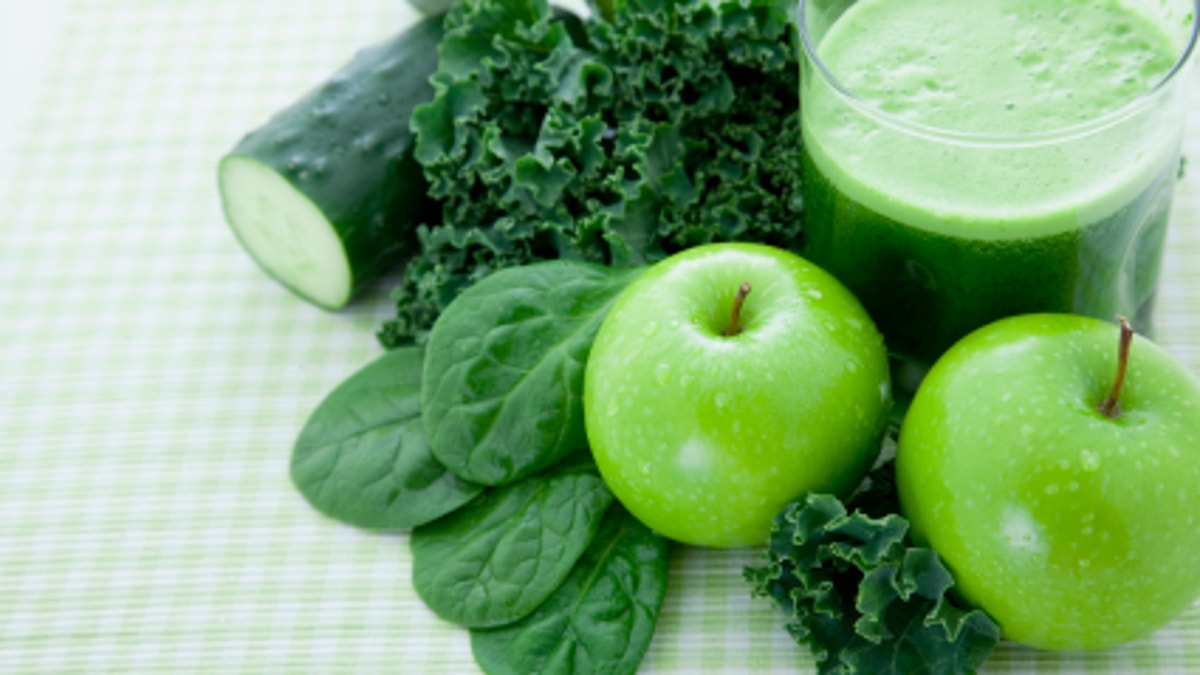
We love green juice. In fact, we love all juices and smoothies. They taste great, they’re healthy, and we can make them at home. Well, okay, we don’t always make them at home—sometimes we get them from places like Melvin’s Juice Box, a New York City juice bar that attracts a star-studded clientele (and is opening a second location this week). But only sometimes. That’s because Melvin’s juices routinely run $8 to $11—a fair chunk of change for 16 ounces of revitalization.
Being the curious critters we are, we wondered: Just why are these drinks so expensive? So we poked around to try and get a handle on the economics of juice. Our list is by no means exhaustive, so feel free to let us know via Facebook or Twitter if we’re missing any crucial cost details. In any case, on to the numbers:
1. The fruit locker
Juice bar owners tend to keep their food costs at 30 percent of the retail price, as New York Magazine pointed out last year. So when you buy a $10 Green Light at Melvin’s, the bar is making a solid $7 of profit (if we’re only looking at product, that is). Before you get upset about the margins, consider this: the average 16-ounce juice at Melvin’s contains anywhere from one to two pounds of produce—all of which is organic, which means it’s pricier. To make just one juice every day for a week, you’d have to enough find room in your non-produce-dedicated fridge to fit about 11 pounds of fruits and vegetables.
2. The rent is too damn high
According to current listings on NestSeekers, commercial rents in SoHo run about $5 to $17 per square foot per month. So Melvin’s 600-square-foot storefront (which includes kitchen and basement storage) would likely cost $3,000–$10,000 a month. Yearly utilities would tack on another $8,000 (an estimate we got using ConEdison’s commercial energy calculator). Last, but not least expensive, commercial waste disposal in NYC can run you a maximum of about $11 per pound, which certainly adds up. Melvin’s currently gives away the majority of its pulp to neighbors who want it for composting, so one would hope those savings mean the juices are cheaper than they’d be otherwise.
3. Someone has to pay for that juicer
There’s no getting around it: commercial juicers and blenders aren’t cheap. Melvin’s uses a combination of the Vita-Prep 3 blender ($606) and an ASJ automatic centrifugal juicer (vegetable-specific models start at $2,400), and the West Houston location is equipped with four juicer-blender stations, for a likely initial investment of at least $12,000. And that’s without regular maintenance, repairs, and replacements—not to mention constant cleaning. Which brings us to:
4. The dirty work
To clean a juicer means disassembling it, so its many parts can be washed separately. Ain’t no robot gonna do that! Human beings are needed on-site to do the cleaning, not to mention prepping the produce for the actual juicing. And human beings have this odd habit of wanting to get paid for their labor. Since Melvin’s requires newly hired juicers to go through five days of training before they even hit the floor, and then only to assist for possibly months before they make a juice solo, that’s a major investment, even if Melvin’s only pays minimum wage ($7.25/hour in New York).
Check out the full story on juice bar economics.
More from Bon Appétit
How to Make a Better Peanut Butter and Jelly Sandwich
22 Recipes Everyone Should Know How to Cook
France Without Baguettes? Countries Cutting Back on Their Iconic Foods
